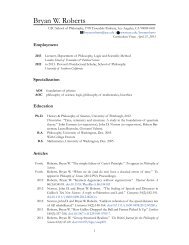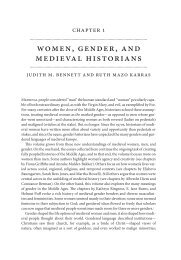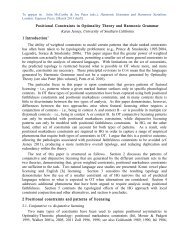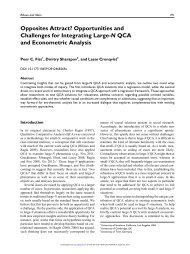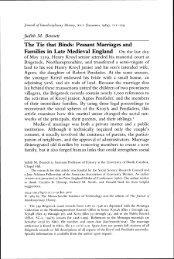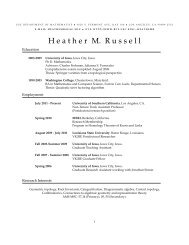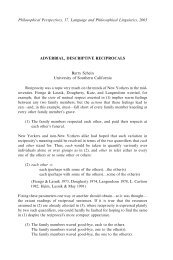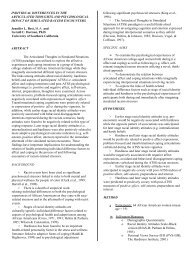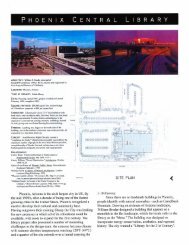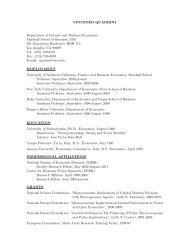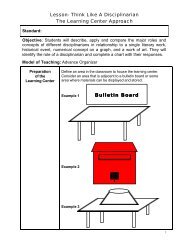Shieva Kleinschmidt [This version differs from the Phil Studies ... - Usc
Shieva Kleinschmidt [This version differs from the Phil Studies ... - Usc
Shieva Kleinschmidt [This version differs from the Phil Studies ... - Usc
Create successful ePaper yourself
Turn your PDF publications into a flip-book with our unique Google optimized e-Paper software.
will follow Markosian in using ‘a portion of stuff’ as synonymous with ‘some stuff’. So<br />
even though ‘portion’ is a count noun, it does not refer to things. 7<br />
None of this is to give an account of what stuff is, however. Markosian suggests<br />
we take <strong>the</strong> notion of stuff (as well as thing and constitution) as primitive. What’s crucial<br />
for <strong>the</strong> stuff <strong>the</strong>orist is that stuff occupies an ontological category separate <strong>from</strong> (and not<br />
reducible to) those of things and pluralities. A portion of stuff is never identical to a<br />
thing or plurality, even though it can be referred to, is self-identical, and can be<br />
differentiated <strong>from</strong> o<strong>the</strong>r entities. 8 It’s difficult to fur<strong>the</strong>r cash out this talk of<br />
fundamental ontological difference, but <strong>the</strong> stuff <strong>the</strong>orist depends on it when <strong>the</strong>y claim<br />
that colocation of members of <strong>the</strong> same fundamental ontological category is problematic,<br />
but colocation of members of different fundamental ontological categories (at <strong>the</strong> level of<br />
thing, stuff, and plurality) is not.<br />
There is disagreement about when it is problematic for two entities to exactly<br />
occupy <strong>the</strong> same region. Some people believe it is never problematic. O<strong>the</strong>rs say that it<br />
is always problematic, regardless of which ontological categories <strong>the</strong> entities involved<br />
belong to. 9 The stuff response presupposes that each of <strong>the</strong>se views is incorrect. For if<br />
<strong>the</strong> first response were correct, <strong>the</strong>n <strong>the</strong>re would be no need to posit stuff to respond to<br />
our original puzzle; and if <strong>the</strong> second view were correct, <strong>the</strong> positing of stuff wouldn’t<br />
7 I’m also going to remain neutral as possible on <strong>the</strong> persistence conditions of portions. When asserting<br />
that <strong>the</strong> bronze is actually a portion of stuff, however, it’s important to consider that in order for this to be<br />
plausible <strong>the</strong> portion of stuff must have <strong>the</strong> same persistence conditions that we took <strong>the</strong> bronze to have.<br />
Thus, if <strong>the</strong> bronze does not have mereological constancy as a persistence condition but we think that any<br />
portion of stuff would have such a persistence condition, <strong>the</strong>n we cannot use stuff to avoid colocation in<br />
this case. Ano<strong>the</strong>r persistence condition which may vary <strong>from</strong> stuff to thing is <strong>the</strong> requirement of spatial<br />
proximity of an entity’s parts. The proponent of <strong>the</strong> stuff-solution must be aware of <strong>the</strong>se issues. Fur<strong>the</strong>r,<br />
even if <strong>the</strong> stuff <strong>the</strong>orist’s characterisations of bronze correspond to <strong>the</strong> characterisations we took it to have,<br />
<strong>the</strong>re will still be worries about colocation involving <strong>the</strong> statue: for instance, what of <strong>the</strong> statue and <strong>the</strong><br />
lump of bronze (which may have close spatial proximity of its parts as one of its persistence conditions)?<br />
However, <strong>the</strong> question addressed in this paper is not whe<strong>the</strong>r positing stuff can adequately address all<br />
instances of <strong>the</strong> problem of colocation in <strong>the</strong> vicinity (!), but ra<strong>the</strong>r whe<strong>the</strong>r it can solve even one, and how<br />
we would need to characterise stuff in order to achieve this. These o<strong>the</strong>r instances of <strong>the</strong> problem of<br />
colocation do raise an important concern, however: <strong>the</strong>y must be addressed somehow, and if <strong>the</strong> way in<br />
which it’s done can also address <strong>the</strong> statue and bronze case (or whatever case we’re trying to address by<br />
positing stuff), it seems that avoiding colocation no longer gives us motivation to claim stuff exists.<br />
8 Zimmerman, “Coincident Objects: Could a ‘Stuff Ontology’ Help?” p. 22. Zimmerman evaluates this<br />
predication over stuff, and if he’s right in thinking that it must be incorrect <strong>the</strong>n <strong>the</strong> view I’m evaluating<br />
cannot get off <strong>the</strong> ground. But because I’m interested in drawing out o<strong>the</strong>r consequences of <strong>the</strong> view, I’ll<br />
set this issue aside.<br />
9 <strong>This</strong> view has some strange consequences. For instance, it has <strong>the</strong> result that ei<strong>the</strong>r events are not located,<br />
or <strong>the</strong>y are problematically coincident with things that exactly occupy <strong>the</strong> same regions, given that those<br />
things are not <strong>the</strong>mselves events.



